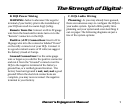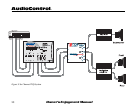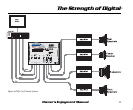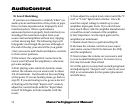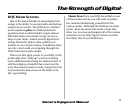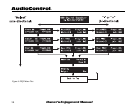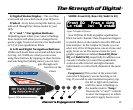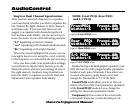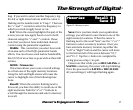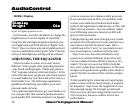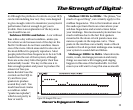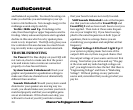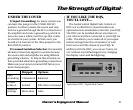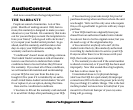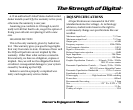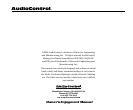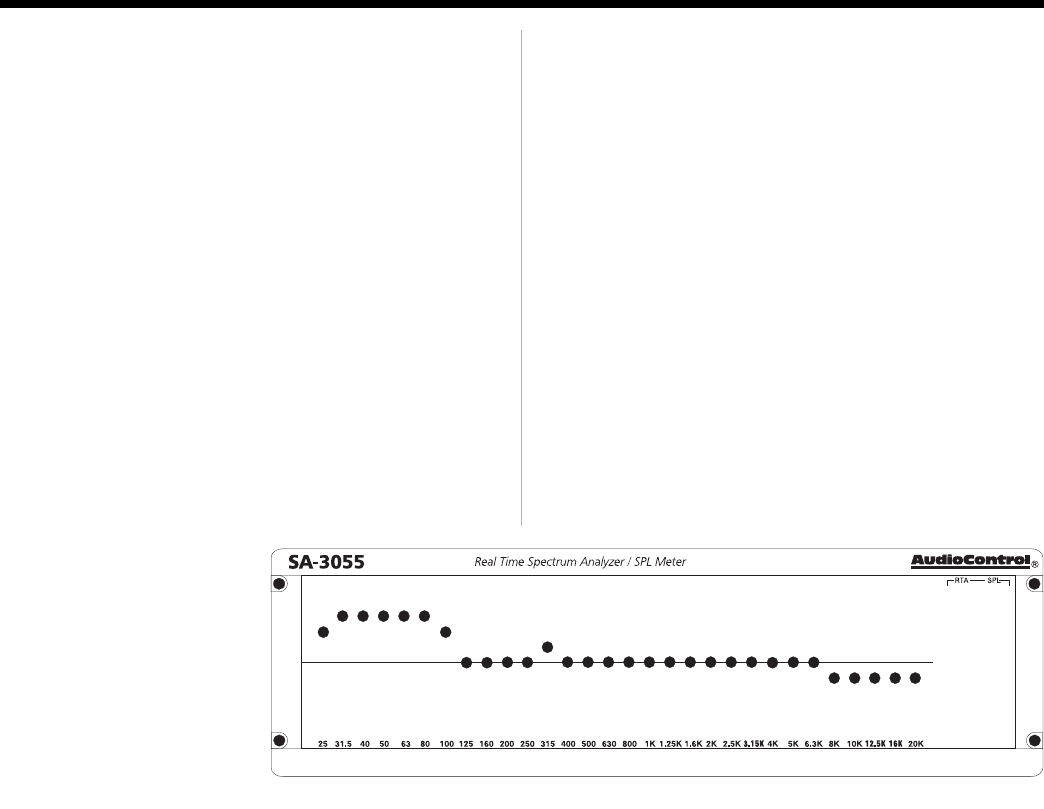
Owner’s Enjoyment Manual
The Strength of Digital
™
19
4) Although the plethora of controls on your DQS
can be intimidating, fear not; they were designed
to give enough control to maximize your system’s
performance but not enough to get you in
trouble. Here is an explanation of the key areas
you should focus on:
Sub-bass: 100 Hz and below - A car without
bass is like a day without sunshine…unless you
live where we do because most of the days in the
Pacific Northwest do not have sunshine. Bass is
one of the more critical areas and it is also one of
the most difficult to properly reproduce. Most
people prefer their bass frequencies to be 6 to 9 dB
louder than the rest of their system, although
there are some crazy folks that prefer their bass
substantially louder. The key in this area is to
have enough speakers and power to produce the
amount of bass you
desire. But don’t use the
controls on the DQS to
try and force your
speakers to produce
sounds they can’t. Too
much bass boost creates
a condition called
“speakerus explodus”,
which is not pretty to
hear or watch.
Midbass: 100 Hz to 300Hz - The phrase, “too
much of a good thing”, can certainly apply to the
midbass frequencies. This is the transition area of
the audio spectrum that is an octave above your
sub-bass frequencies and several octaves below
your midrange. Most autosound systems have too
much mid-bass due to the fact that speakers
mounted in the doors or kick panels cause reso-
nances or peaks in the response curve. These
peaks in the mid-bass can actually mask or block
sounds in the all-important midrange area causing
your system to sound dull and lifeless.
Midrange: 300Hz to 3kHz - Musical instru-
ments, vocals, mid-range percussion and many
things we associate with imaging and staging
happen in this area of the bandwidth. For that
reason you will want to keep this area as smooth
Figure 13: Sample RTA curve



